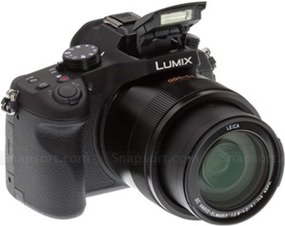
I received this letter from one of the regular readers:
Dear Harry,
I read, with interest, your article, “Buying a new camera”, published in the Pattaya Mail (October 16, 2015). Yes, I am still continuing to read your articles!
I first wrote to you a year ago for advice on this very subject and would like to let you know that after a year of reading various articles, reviews, and forums, I decided to go with your recommendation and have recently purchased the Lumix FZ 1000.
By the way, I also decided to keep my Lumix compact camera, that can easily slip into my pocket, both for backup and occasions where the FZ 1000 may prove just a little bit cumbersome.
Of course, after buying any new camera it is also important to read…no…study, the manual in depth. The one for this camera is 366 pdf pages long, so no doubt I will be studying it for a while to come. The funny thing with me is that I was in such a hurry to “show off” and try out my new camera, before studying the manual, that I took it to a family birthday party the very next day. The camera (set in auto mode) told me, in several instances, to open the (pop-up) flash and, of course, I didn’t know how to. Not too disastrous, but I have now found that switch!
On another subject, and perhaps food for thought for a future article from you, is “aspect ratio”. I personally never really thought about this too much (until I got the new camera). I usually use 16:9 most of the time, as I shoot a lot of landscape stuff. Then I always forget to change the ratio for other shots, portraits, close ups and the like. Yes, they can be post cropped but, of course, with loss of quality. I also note that the “retro” square photographs seem to be coming back into fashion. Any thoughts on this?
Keep up the good work with the articles about this very interesting topic/hobby of photography.
Barry
After that kind note, I decided I would do a browse around one of the local camera shops (Big Camera Central Festival) and I was somewhat taken aback. It is quite some time since I actually bought a new camera, I was well out of date. Top end cameras from the Nikon stables were astronomical in price. A D series with a kit lens for B. 89,900. Even the lower end of the Nikon cameras were around B. 30,000. Canon were in the 20-40 K range and Olympus OM cameras were 45-72 K.
Even lenses were expensive, with after-market manufacturers like Tamron having lenses around 40K.
I could see why the retailers were having to offer six month terms at zero percent interest. And I could also see why camera phones are just so popular.
In this column I have concentrated on the techniques in photography, hoping to impart some of the knowledge I gained from working in my own professional studio. For me, the cameras had to earn their keep so I had the full Nikon system, Hasselblads and Cambo rail cameras. Some of these were expensive (then), but I had enough work for them to be able to afford the purchase. But I just wonder if that could be done today?
Pro shooters have to fight against the photo libraries. Art directors want to be able to pick an image without having to hire the photographers and model fees. They also expect their backsides to be licked! All that the photographer can do is try and have his work accepted by a library. (I was lucky and my work was accepted by one of the many photo libraries – but unfortunately it folded, my slides were returned and it was back to square one.)
Quite honestly, the majority of the top end cameras are really only for pro use. A savvy amateur can produce very acceptable images with the lower grade (around 30-40K) cameras. Working out exposure is a thing of the past and the subsequent images stand or fall with the technique of the photographer.
Start with the Rule of Thirds!
 |
 |
 |





